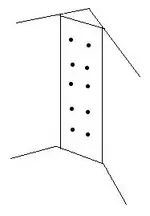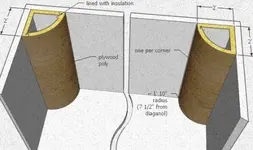F
frequency_
New member
I was in a recording studio about a year ago, and i noticed there was two hard wood panels on corners of the rear wall in the control room, there were small holes on the pannels, small enough to fit a pencil. I asked the guy what these panels were for, and he said its bass traps. I didnt pay much attention and now it came in my mind again. I asume they worked somehow like Helmholtz resonators. Are you familiar with these bass traps? If so do you think they re effective?...more effective than rigid fiberglass? they looked something like the picture below


